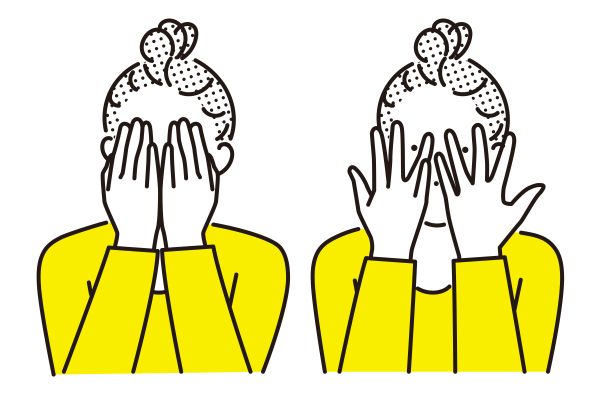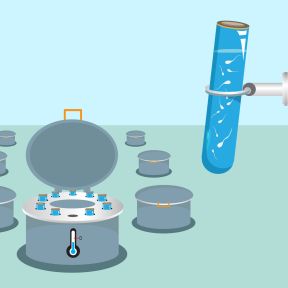Foster Care and Adoption
There are currently hundreds of thousands of children in foster care across the U.S. Though some will be reunited with their families of origin at some point, there are many who will not and who subsequently need to be adopted into permanent homes.
Foster adoption is typically less costly than either domestic or international adoption—in some cases, parents will pay no fees at all—and is subject to fewer age or marital restrictions, making it an appealing option for many would-be parents. Though living in foster care can be tumultuous for children, many former foster children are able to thrive once they are adopted into secure, supportive homes. However, there are some challenges to foster adoption that prospective parents should be aware of. Parents should expect to adopt an older child, should be aware of the potential negative effects of trauma or neglect, and be prepared to navigate complex relationships with birth families.
On This Page
Few people are well-versed on the foster care system in general; even fewer are clear on how the foster-care-to-adoption path (often shortened to fost-adopt) works. Educating the general public about foster care—and providing people the opportunities to become foster parents or adopt from foster care if they so choose—has the potential to improve the lives of hundreds of thousands of children who are currently living in the foster care system, many of whom live in unsafe situations or who have no chance of reunification with their birth families.
On the other hand, it’s important for people to understand that the goal of foster care is to ultimately reunite as many children with their birth families as possible. Reducing stigma around foster care itself and providing greater social support for families that are struggling can help the foster care system better achieve this goal.
Foster care is (in theory) temporary, while adoption is permanent. Children enter foster care when their birth parents are unable to care for them; this may be because of abuse, neglect, addiction, or some other cause. Children are placed with foster parents, or temporary caregivers, by a state agency in charge of child welfare—for many children currently in foster care, the state aims to reunite them with their parents when they demonstrate that they are better able to care for their child.
In many cases, however, their parents voluntarily relinquish or are stripped of their parental rights due to repeated problems or if they are determined to be unable to provide for their child financially, emotionally, or otherwise. Once parental rights have been terminated, the child can be placed for adoption. Once formally adopted out of foster care, their adoptive parents assume full parental rights; though the children may maintain contact with their families of origin, they will not be placed back into their care.
Many children in foster care, however, are not adopted despite parental rights being terminated. These children will remain in foster care until they age out, usually at the age of 18 or 21 (depending on the state in which they live). According to AdoptUSKids, a foster care advocacy organization, approximately 20,000 U.S. foster youth age out of the system every year. Aging out of the foster care system without being adopted is associated with worse economic, social, and psychological outcomes in adulthood.
As a result of trauma, neglect, or family separation, evidence does suggest that children in foster care are significantly more likely than others to be diagnosed with a mental health disorder. In 2018, a spokesperson from the Department of Health and Human Services estimated that approximately 80 percent of foster children have some kind of mental health need.
Foster children may also be significantly more likely than non-foster children to be on psychiatric medication. Government data suggests that nearly 30 percent of children in foster care have been prescribed a psychotropic medication, compared to 6 percent of children who are not in foster care.
Some children who spend time in foster care emerge without lingering mental health challenges. But foster care itself, or the circumstances that led to a child being placed there, can be traumatic for children. They may experience neglect or abuse (either in their families of origin or while in foster homes), or may have to cope with being placed in foster care, getting reunited with their family of origin, and then placed into foster care again. Any of these circumstances can result in anxiety, depression, PTSD, conduct disorder, or other mental health challenges. It may also trigger defiance, lying, or other challenging behaviors.
Foster parents, adoptive parents, and/or the child’s family of origin should prioritize meeting the child’s emotional needs, rather than punishing every outwardly negative behavior. Meeting the child where they’re at can help families navigate the complicated path toward healing.
Being a foster parent—providing a temporary home for a child while they wait to be reunited with their birth family or be adopted by a permanent family—can be deeply rewarding, and foster parents have the opportunity to positively affect the lives of children who, through no fault of their own, have been placed in traumatic or unhappy circumstances. But it’s also quite challenging. Foster children have often been the victims of trauma or neglect; foster parents must navigate the resulting mental health issues or problematic behaviors—some of which can be quite severe. The situation can be further complicated by the fact that the child may not trust the foster family she was placed with and may thus refuse help.
Foster parents may also struggle with seeing many children enter and exit their foster home; some will be returned to their families of origin, some will be adopted, and others will be placed into a different foster parent’s care. This can be painful for foster parents who have formed emotional attachments to the child. Some foster parents also attempt to formally adopt a child in their care. While this is sometimes successful, it can end in disappointment for the foster parent when the child is placed back in the care of his family of origin.
A strong social support system can help foster parents manage these mixed emotions. It can also help for foster parents to remind themselves that the goal of foster care is to place children in permanent homes. Foster parents who wish to adopt through foster care are encouraged to try—they should know at the beginning, however, that it may not work out the way they hoped. Being a foster parent is still a valuable pursuit that can provide a safe haven for children in unsafe situations.
Adopting from foster care is often significantly less expensive than adopting either domestically or internationally; it may also take less time, depending on the flexibility of the prospective parents and the children that are available for adoption at that time. Many parents who adopt from foster care were foster parents first—even, in some cases, fostering the child that they later went to adopt.
Many parents who adopted from foster care report that raising their child was ultimately a fulfilling experience. But most foster adopters readily acknowledge the challenges inherent in the process. A child adopted from foster care is likely to be older—most are over the age of 3—and there is a significant chance that they will have experienced emotional, sexual, or physical abuse; neglect; instability; and other challenges. Parents often must do a significant amount of work to help the child learn to trust again and start to emotionally heal. In some cases, the foster adoption process has false starts—an adoptive family may bond with a child and hope to adopt them, only to later learn that they were reunited with their family. This can be heartbreaking for prospective parents.
But in the end, many parents pursue foster adoption because it feels right for their family and because they wish to provide a permanent home for a child who needs one. Knowing ahead of time what they’ve signed up for—and drawing on their own support systems when challenges arise—can help families navigate the highs and lows of foster adoption.
In general, there are a few things that all foster parents can do to help their children thrive.
Parents should first work to create a safe, nurturing space. This includes consistent structure—including house rules, daily routines, and designated family time. Foster children often spend time in chaotic places prior to being adopted; they will benefit immensely from structure and stability in their new home.
Many foster children crave attention after living in often crowded foster homes, but they may also become easily overwhelmed by excessive questioning and focus. Parents should show genuine interest in their child’s life while trying to find a balance between offering attention and affection and giving the child space.
Accept small misbehaviors and focus on understanding the child's larger psychological and physical needs. Seek the help of a therapist when necessary.
Foster children may maintain relationships with their birth family even after being adopted, so be prepared to a child manage complicated feelings about the relationship—he may love and miss his parents, for instance, yet feel furious toward them for their behavior or for allowing him to be placed in foster care. Assure the child that these feelings are okay. If the family of origin is still involved in the child’s life, parents should facilitate communication with them when necessary and work to draw appropriate boundaries.
Because the circumstances that lead to children being placed in foster care vary widely, it’s important for parents to educate themselves on how to respond to their child’s specific needs. A child who experienced sexual abuse, for instance, will likely need a different approach than a child whose parents struggled with addiction. Parents should not hesitate to consult experts or therapists to figure out the best approach for their child.
In general, providing consistent emotional support and safety, as well as routines and structure, can help a child trust that she will not be revictimized and will help promote resilience. Communication is key; children should know that they can talk to their parents about anything, including painful or upsetting topics, without being ignored or have their feelings glossed over.
Yes; in fact, it’s extremely common. Seeing a child who they hoped to adopt return to his family’s custody can trigger immense grief—along with feelings of guilt—in prospective adoptive parents. Some describe it as disenfranchised grief—that is, grief that they feel immensely but that no one else seems to acknowledge or recognize.
On the one hand, many recognize that the goal of the foster care system is to reunite children with their families of origin whenever possible—and for many children, doing so is ultimately the best choice for them. For this reason, adoptive parents may feel selfish for feeling grief. On the other hand, bonding with a child who they can no longer parent, particularly if the child lived with them for months or even years before being reunited with his family, can be emotionally devastating. In some cases, adoptive parents may worry that returning the child to the family of origin will be harmful to her, which can trigger additional feelings of despair.
Those in this situation should not hesitate to seek help; the grief they’re feeling is very real and can be very painful. Turning to loved ones—sharing memories of the child, talking through painful emotions, or asking for concrete help during periods of sadness—can also aid in the grieving process.
Above all, it’s important for prospective parents to be patient with themselves, acknowledge that their grief is valid, and remember that grieving takes time. Even if they have other children or are able to successfully adopt from foster care in the future, it’s possible that they will always feel sadness about the child who they hoped to adopt. That’s okay.














